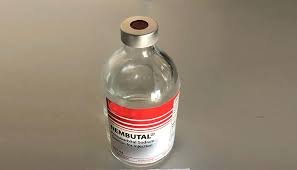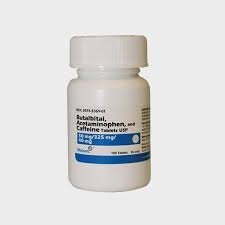Introduction to Aprobarbital
Aprobarbital, also known by its alternative names including aprobarbitone, Oramon, Somnifaine, and Allonal, is a barbiturate derivative that has played a significant role in the development of pharmacological treatments since its inception. This particular compound was first synthesized in the 1920s by the Swiss pharmacologist Ernst Preiswerk, marking an important milestone in the history of sedative medications.
Barbiturates as a class have been widely used for their sedative and hypnotic properties, and aprobarbital is no exception. Classified within this group, aprobarbital operates primarily by depressing the central nervous system, thus inducing calmness and sleep. Its efficacy has made it a staple in the treatment of conditions like insomnia, anxiety, and in some cases, seizures. Besides its use as a sedative, it has also had applications in relieving acute anxiety syndromes and aiding in the anesthesia process due to its calming effects.
The 1920s, a decade marked by significant advancements in medicinal chemistry, provided fertile ground for the discovery and implementation of new therapeutic substances. Within this context, the development of aprobarbital was a notable achievement, expanding the toolkit of medical professionals in managing a range of neurological and psychiatric conditions. Although newer pharmaceuticals have since supplanted many of its uses, the historical importance of aprobarbital in medicine remains undeniable.
“`
Pharmacological Properties and Mechanism of Action
Aprobarbital, a member of the barbiturate class of medications, exhibits significant pharmacological properties, including sedative, hypnotic, and anticonvulsant effects. Barbiturates have historically been employed to manage a variety of conditions such as insomnia, anxiety, and seizure disorders. The efficacy of barbiturates, including aprobarbital, stems from their profound influence on the central nervous system (CNS).
Barbiturates function primarily by enhancing the activity of gamma-aminobutyric acid (GABA), the principal inhibitory neurotransmitter in the CNS. GABA exerts its effects by binding to GABA-A receptors, which are chloride ion channels located on neuronal membranes. When GABA binds to these receptors, it causes an influx of chloride ions into the neuron, producing hyperpolarization and reducing neuronal excitability. This inhibitory action leads to the reduction of CNS activity, which subsequently induces the sedative and hypnotic effects observed with aprobarbital.
Aprobarbital specifically potentiates the action of GABA by binding to a site on the GABA-A receptor complex distinct from the GABA binding site. This allosteric modulation enhances the affinity of GABA for its receptor and prolongs the duration of chloride ion channel opening when GABA is present. As a result, neuronal inhibition is intensified, leading to the decreased neural transmission that underlies the drug’s sedative and hypnotic properties. In high enough doses, this mechanism can also produce significant anticonvulsant effects by stabilizing hyperactive neuronal circuits, thereby preventing seizure propagation.
Furthermore, the pharmacokinetic profile of aprobarbital facilitates its clinical usage. The drug is well-absorbed orally, widely distributed across tissues, and efficiently metabolized in the liver. The half-life of aprobarbital supports its effectiveness in providing sustained therapeutic effects over an extended period. These attributes collectively underscore the utility of aprobarbital in medical applications where modulation of CNS activity is desired.
Aprobarbital, a barbiturate derivative, has been primarily utilized for its sedative and hypnotic properties, making it a prevalent choice for the treatment of insomnia. Initially synthesized in the early 20th century, aprobarbital gained traction alongside other barbiturates due to its effectiveness in inducing sleep and moderating anxiety. Physicians commonly prescribed this medication to patients struggling with various forms of sleep disorders, capitalizing on its ability to depress the central nervous system and promote restorative sleep.
Historically, the widespread use of aprobarbital peaked during the mid-1900s, particularly before the advent of benzodiazepines. During this period, it was a favored remedy in the pharmacological arsenal against insomnia. Physicians of the time often prescribed it in tablet or liquid form, with the typical dosage ranging from 30 to 50 mg for sleep induction. Its utility extended to short-term treatments, mainly owing to its intermediate duration of action, which provided a balance between efficacy and minimized residual effects the following day.
Beyond its primary role in combating sleep disorders, aprobarbital also found applications in managing seizure disorders. Thanks to its anticonvulsant properties, it was employed in the treatment of epilepsy, particularly in scenarios where patients required an alternative or adjunct to primary anticonvulsants. It functioned by stabilizing neural membranes and reducing the excitability of the nervous system, thereby diminishing seizure frequency and severity.
Notwithstanding its therapeutic benefits, the use of aprobarbital necessitated careful consideration due to its potential for dependence and abuse. Prescribing practices during its period of common use entailed stringent monitoring of dosage and duration to mitigate the risks of tolerance, dependence, and adverse effects. As a result, the emergence of newer, safer alternatives eventually led to a decline in its prevalence. Today, while less commonly used, its historical and medical significance remains a testament to its role in the development of pharmacological interventions for insomnia and seizure management.
Safety, Side Effects, and Modern-Day Relevance
Aprobarbital, once a commonly prescribed sedative and anticonvulsant, possesses a safety profile that necessitates a cautious approach. The primary concerns surrounding aprobadoital are rooted in its potential side effects and risks. Among the most documented side effects are drowsiness, dizziness, nausea, and headache. More severe adverse effects can include respiratory depression, dependence, and, in extreme cases, overdose. It is paramount to recognize that these risks are not merely theoretical; historical instances highlight real-world scenarios where patients succumbed to these complications.
The decline in the medical use of aprobarbital is largely attributed to the identification and synthesis of safer, more effective alternatives. Benzodiazepines, for example, represent a class of medications that have largely supplanted barbiturates like aprobarbital due to their improved safety profiles and reduced potential for abuse and dependence. Additionally, advancements in pharmacology have introduced a variety of non-barbiturate sedatives and anticonvulsants, such as selective serotonin reuptake inhibitors (SSRIs) and other modern antiepileptics, which further diminish the need for barbiturates in clinical practice.
Despite the decline in its use, aprobarbital’s historical significance in the evolution of medicinal chemistry cannot be overlooked. The experiences garnered from its widespread use have provided invaluable insights into the central nervous system’s function and the pharmacodynamics of sedative and anticonvulsant agents. Today, the principles derived from the use of aprobarbital inform the development of newer medications, aiding in the continual improvement of patient outcomes and safety.
In contemporary medical practice, aprobarbital has largely fallen out of favor, overshadowed by drugs that offer a balance of efficacy and safety. Nonetheless, its legacy endures, serving as a cornerstone in the history of sedative and anticonvulsant therapy. This legacy underscores the importance of continuous innovation in pharmacotherapy, aiming to provide patients with more effective and safer treatment options.






Reviews
There are no reviews yet.